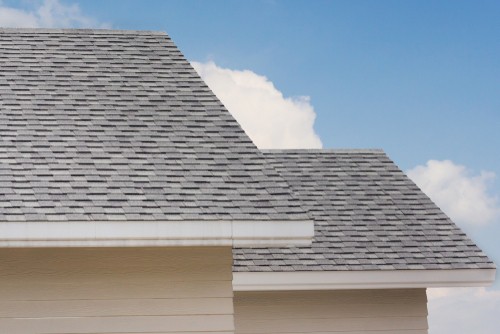Roofing has changed a lot over the last few decades. Today, there are more types of roofing materials available for homeowners to choose from than ever, and each offers its own pros and cons. If you’re considering having a new roof installed on your home, then you should really take the time necessary to ensure you’re choosing the best roofing material for your home and your budget.
Types of Roofing Materials
In this guide, you’ll learn more about the different types of roofing materials and their attributes. There are many roofing materials to consider, depending on the specific needs of your home. Learn more about some of the most common and popular materials.
Asphalt Shingles
Asphalt shingles are the most widely used roofing materials because they’re affordable and effective. Available in an array of colors and styles, the type you’ll need for your home will depend on your home’s aesthetics and the environmental conditions you live in.
For instance, if you live in an area that gets a lot of high winds, then you’ll want asphalt shingles that pass the ASTM D3161, Class F (110 mph) or ASTM D7158, Class H (150 mph) wind tests and the AC438 durability test. It is important to note that asphalt shingles usually need to be replaced after about 50 years, so while they may be the cheapest option, they do require replacement more frequently than other roofing materials.
Slate Tiles
Slate tiles have been used for centuries. It’s no wonder because they can last more than 100 years when they’re installed properly. Slate tiles are so long-lived because they’re waterproof, fire resistant, and resistant to mold and fungus. But as effective as slate is, it’s an expensive roofing material. It’s also heavy and can be easily broken when stepped on. Because of its proneness to chipping, you may not want to use it if you live in an area that gets a lot of hailstorms.
Clay or Concrete Tiles
Clay and concrete roof tiles are popular choices in areas with warm and dry climates, but they’re also great in areas prone to strong storms, earthquakes, tornadoes, hurricanes, or winds up to 125 miles per hour. However, they are extremely heavy and can sometimes require additional support to be installed in an attic to help bear the weight. Plus, like slate tiles, despite their durability in storms, they can also break when walked on.
Metal
Metal roofing is available in a variety of styles, including vertical panels and shingles, with some models made to resemble slate, tiles, or shakes. While metal roofing can be expensive to install, its durability makes it a great investment because it can last over 60 years. Metal is lightweight and can even be installed over existing roofs, which can help offset the cost of removing the old roof. However, a metal roof can be noisy during rainstorms, and can even dent from hail.
Stone-Coated Steel
Stone-coated steel roofing comes in interlocking panels that are designed to look like slate, clay, or shingles. This material is very resilient and can stand up to heavy rains (up to 8.8 inches per hour), 120-mph winds, and frequent hail and freeze-thaw cycles. It’s not uncommon for stone-coated steel roofs to be warranted for the life of the house.
Rubber Slate
Rubber slate is a common type of roofing material used on Victorian homes. Rubber slate is extremely durable and can last up to 100 years or longer, but as strong as it is, it can be damaged when individuals walk on it, or by hail. It can also lose its integrity when pierced for installing things like satellite dishes or solar panels.
Solar Tiles
Solar tiles look like regular roofing tiles, but each one is a solar panel capable of generating up to 1 kilowatt of energy per 100 square feet. They can even be integrated into existing shingles and they make for a great option for people who want solar energy but not the cumbersome rooftop panels that it usually requires.
Built-Up Roofing
Built-up roofing consists of multiple layers of asphalt, tar, or other adhesive topped with an aggregate, like gravel. As a result, this type of roofing is for flat roofs only. Built-up roofing can last from 20 to 25 years, but they can pose a problem with snow removal in colder climates.
Green Roofing
Green roofing involves covering the roof with plants. Because the plants require soil, drainage, compost, water filtration, and everything else plants need to survive, this type of roofing is very heavy and additional support is usually installed. A green roof can help improve local air quality, reduce water runoff, and insulate a home and it can last for about 40 years when cared for properly.
Get a Free Estimate for Your New Roof from Thompson Creek Today
Thompson Creek can custom design, and install your new roof for less than you might think. Our experienced roofers practice the latest installation techniques and use the most technologically advanced roofing materials to give your home a new roof that not only looks great, but one that’s also built to last. To learn more, contact Thompson Creek and get a free roofing estimate today.


